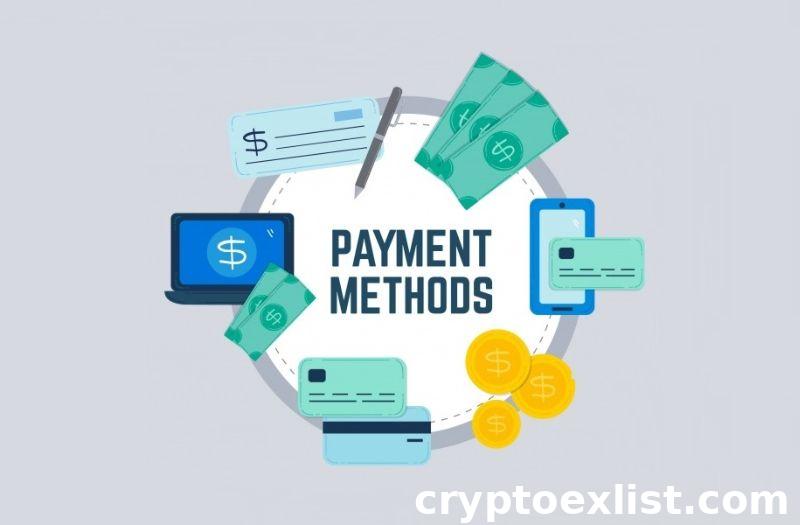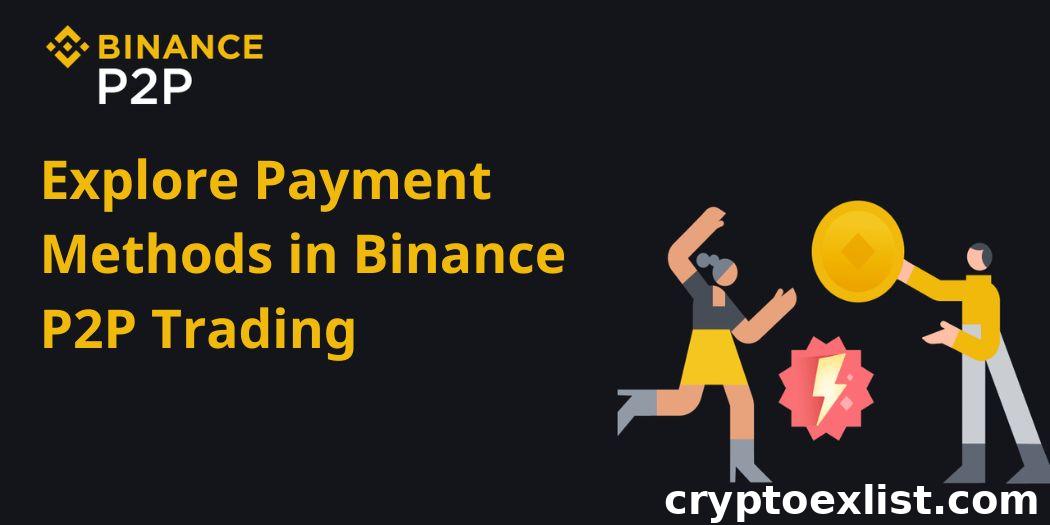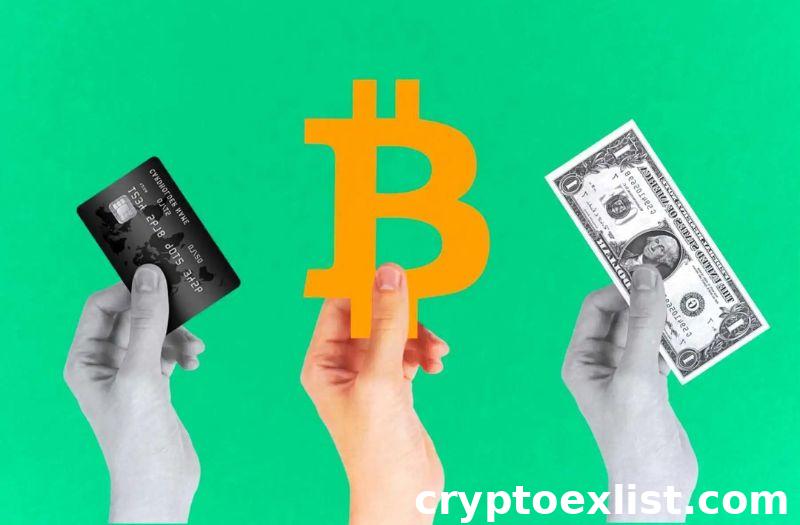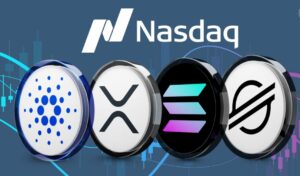
Binance P2P trading offers a flexible and secure way to buy and sell cryptocurrency using a variety of payment methods. Whether you prefer traditional bank transfers, the convenience of e-wallets, or even direct cryptocurrency payments, Binance P2P ensures you can choose a method that works best for your needs. In this guide, we’ll explore the various payment options available, including fiat currencies, local payment methods, and the importance of Binance’s built-in escrow system. If you’re new to P2P trading or looking to optimize your payment strategy, this overview will help you navigate the platform with confidence.
Overview of Payment Methods Available
When engaging in Peer-to-Peer (P2P) trading on Binance, one of the key advantages is the flexibility of payment methods available. Whether you’re buying or selling cryptocurrency, having multiple options for payment ensures that you can choose the method that works best for you. Binance P2P supports a wide range of fiat currencies and payment methods, making it accessible to users across the globe. Let’s dive into the fiat currencies supported and some of the most popular payment options on Binance P2P.
Fiat Currencies Supported
Binance P2P offers support for a wide variety of fiat currencies, catering to a global user base. Whether you’re trading in US Dollars (USD), Euros (EUR), Chinese Yuan (CNY), or Indian Rupees (INR), the platform ensures that traders can transact in their local currency. This is a major advantage for users, as it eliminates the need for conversion fees and simplifies the transaction process. For traders in regions with more restrictive banking systems, Binance P2P provides a bridge to cryptocurrency through supported local currencies, allowing greater financial inclusion. By supporting multiple fiat currencies, Binance ensures that users can trade easily and efficiently, regardless of their location.
Popular Payment Methods on Binance P2P
Binance P2P offers a wide range of payment methods to cater to different preferences and regional availability. Bank transfers are one of the most common methods used on the platform, offering a secure and direct way to send and receive funds. In addition to bank transfers, popular mobile payment services like PayPal, Revolut, and Venmo are widely supported, making it easy for users to complete transactions quickly. In some regions, cash payments are also an option, allowing users to meet in person for a more direct exchange of funds. Each payment method has its own advantages—bank transfers are reliable and familiar, while mobile wallets offer speed and convenience. By offering various payment methods, Binance P2P ensures that users have the flexibility to choose the option that best suits their needs, enhancing the overall trading experience.

Bank Transfers as a Payment Method
Bank transfers are one of the most widely used and trusted payment methods for Peer-to-Peer (P2P) trading on Binance. This option allows traders to send or receive funds directly through their bank accounts, offering a secure and straightforward way to complete cryptocurrency transactions. For newbies venturing into P2P trading, understanding the pros and cons of using bank transfers is crucial in deciding whether it’s the best option for you.
Advantages of Bank Transfers
One of the biggest advantages of using bank transfers for P2P trading is security. Banks offer robust security protocols, including encryption and fraud detection systems, which add an extra layer of protection for your funds. This makes bank transfers a safe method for large transactions. Additionally, bank transfers are widely available across different countries, allowing you to access P2P trading regardless of your region. Another perk is that bank transfers do not usually involve third-party payment processors, which means fewer fees and a more direct way of moving money between accounts. For traders who prefer reliability and are comfortable with traditional financial institutions, bank transfers are a solid choice.
Disadvantages of Bank Transfers
However, while bank transfers offer security and wide availability, there are also some downsides to consider. One of the main disadvantages is the time it can take for transactions to be processed. Depending on the bank and region, transfers can take hours or even several days to clear, which might slow down your trading activities, especially if you’re looking for faster transactions. Additionally, international bank transfers can come with higher fees, making them less ideal for users looking to minimize costs. Another drawback is the level of privacy—since bank transfers require sharing your account details with the other party, this method may not appeal to those who prioritize anonymity in their transactions.
E-Wallets and Their Role in P2P Trading
E-wallets have become an increasingly popular payment option in Peer-to-Peer (P2P) trading, offering users a fast, convenient, and flexible way to transfer funds. On Binance P2P, traders can use a variety of e-wallets to buy and sell cryptocurrency, making transactions smoother, especially for those who prefer digital solutions over traditional banking. For newbies entering the world of P2P trading, understanding how e-wallets work and their security features is essential for a safe and efficient trading experience.
Commonly Used E-Wallets
Several e-wallets are commonly used in Binance P2P trading, including PayPal, Skrill, Revolut, and CashApp. These digital wallets allow users to send and receive funds almost instantly, making them a popular choice for traders looking for quick and seamless transactions. E-wallets are particularly advantageous in regions where banking systems may be slower or more restrictive, offering an alternative method to complete transactions efficiently. Many of these wallets are available globally, giving Binance P2P users the flexibility to trade with buyers and sellers in different countries without worrying about complicated cross-border transfers. The ability to fund e-wallets through various means, such as credit cards or bank accounts, adds another layer of convenience for traders.
Security Considerations for E-Wallets
While e-wallets offer speed and convenience, it’s important to be mindful of security considerations when using them in P2P trading. Many e-wallets come with built-in security features like two-factor authentication (2FA), encryption, and fraud monitoring systems, which help protect your funds from unauthorized access. However, users should always take extra precautions, such as keeping their e-wallet passwords secure, enabling 2FA, and avoiding suspicious transactions or links. It’s also wise to regularly monitor your e-wallet transactions for any unusual activity. Additionally, be aware that e-wallets may have varying levels of buyer protection, so make sure to understand the terms and policies of the e-wallet you’re using. In the context of P2P trading on Binance, using an e-wallet with strong security measures will help ensure that your funds are safe throughout the transaction process.

Cryptocurrency Payments in Binance P2P
One of the most exciting features of Binance P2P is the ability to use cryptocurrencies themselves as a form of payment. Unlike traditional fiat currencies or digital wallets, cryptocurrency payments offer a decentralized and fast method to complete transactions, which is especially appealing to crypto enthusiasts. For newbies getting started with Binance P2P, learning how to use other cryptocurrencies for payments and understanding the benefits of crypto payments can significantly enhance your trading experience.
Using Other Cryptocurrencies
On Binance P2P, you’re not limited to using just one form of cryptocurrency for trading. In addition to popular options like Bitcoin (BTC), Ethereum (ETH), and stablecoins such as Tether (USDT), users can trade a variety of other cryptocurrencies. This flexibility allows you to choose the digital asset that aligns best with your trading strategy. Whether you’re swapping altcoins or using stablecoins to avoid market volatility, Binance P2P offers a wide range of crypto assets to use in your transactions. The platform also ensures that these transactions are quick and efficient, with crypto payments generally processing much faster than traditional bank transfers. For traders who already hold various cryptocurrencies, P2P trading offers a seamless way to diversify and utilize your crypto assets in real-time.
Benefits of Crypto Payments
There are several significant advantages to using cryptocurrencies for payments in Binance P2P trading. First, crypto payments provide a higher level of privacy compared to fiat currency transactions, as no personal banking information is required. This makes it easier to maintain anonymity while trading. Additionally, crypto payments are often much faster, with transactions being processed almost instantly on the blockchain, making them ideal for users who want to complete trades quickly. Another major benefit is the reduction of fees—cryptocurrency payments typically involve lower transaction costs, particularly when compared to international bank transfers or e-wallet fees. Finally, crypto payments help users avoid currency exchange fees, especially when trading across borders, as the value is settled directly in cryptocurrency. By using cryptocurrencies as your payment method, you can enjoy more control, lower costs, and faster transactions in your P2P trading activities on Binance.

Local Payment Methods: A Regional Perspective
One of the standout features of Binance P2P trading is its adaptability to different regions and local markets, offering users access to a variety of local payment methods. For beginners, understanding these localized payment options is key to making your trading experience smooth and convenient. Depending on your region, certain payment methods may be more accessible, faster, or cost-effective than others. In this section, we’ll explore how local payment methods work and provide tips on selecting the right one for your P2P trading needs.
Understanding Local Payment Options
Local payment methods on Binance P2P are designed to cater to specific regions, making it easier for users to trade cryptocurrencies using payment options that are familiar and widely available in their countries. For instance, in some regions, mobile payment solutions like M-Pesa in Kenya or Paytm in India are popular choices due to their ease of use and fast transaction times. In other regions, bank transfers or even cash payments may be more common. These localized options allow users to complete trades in a way that aligns with their local financial infrastructure, eliminating the hassle of dealing with unfamiliar international payment systems or high conversion fees. By integrating these local methods, Binance P2P ensures that users across the globe can engage in cryptocurrency trading without barriers, using the payment systems they already trust and use daily.
How to Choose the Right Local Payment Method
Choosing the right local payment method depends on several factors, including speed, convenience, fees, and security. If speed is your priority, mobile payment services or digital wallets often provide near-instant transactions, allowing you to complete trades quickly. For those who prefer more traditional methods, local bank transfers can offer a secure and reliable option, but they may come with longer processing times, especially for larger transactions. It’s also important to consider transaction fees, as some local payment methods may charge more than others. Lastly, security should be a top concern—always opt for well-established and secure local payment options that offer fraud protection and encryption to safeguard your financial information. By weighing these factors, you can select the payment method that best aligns with your trading needs and ensures a smooth P2P experience.
Escrow System in Binance P2P Transactions
One of the key features that makes Binance P2P trading secure and trustworthy is its built-in escrow system. For those new to cryptocurrency trading, the concept of escrow can seem unfamiliar, but it plays a crucial role in ensuring both buyers and sellers can trade with confidence. By understanding how the escrow system works and why it’s important in P2P transactions, you’ll be better equipped to navigate Binance P2P trading safely and securely.
How Escrow Works
In Binance P2P trading, the escrow system acts as a trusted third party that holds the seller’s cryptocurrency until both parties—buyer and seller—complete their obligations. Here’s how it works: when a buyer initiates a trade and commits to paying for a specific amount of cryptocurrency, Binance’s escrow system automatically locks the seller’s crypto. This means the seller cannot withdraw or access the funds until the buyer confirms that the payment has been made and the seller has received the funds. Once the payment is verified by the seller, Binance releases the cryptocurrency from escrow to the buyer’s wallet. This process ensures that neither party can back out or scam the other once the transaction is in progress, offering a safe and secure environment for trading.
Importance of Escrow in Payment Methods
The escrow system is especially important when dealing with multiple payment methods, as it provides an additional layer of security regardless of how the transaction is conducted. Whether you are using bank transfers, mobile payments, or e-wallets, escrow ensures that the cryptocurrency is only released once the seller confirms receipt of the payment. This is crucial in preventing fraudulent activities, such as buyers claiming they sent funds when they haven’t or sellers failing to release the cryptocurrency after receiving payment. For newbies entering the world of P2P trading, the escrow system on Binance is a safeguard that helps build trust between parties and reduces the risk of scams, making it a must-have feature in every transaction.
Conclusion
Payment flexibility is one of the standout features of Binance P2P, making it easier for users worldwide to engage in crypto trading with methods that suit their preferences. Whether you’re using bank transfers for reliability, e-wallets for speed, or cryptocurrency payments for privacy, Binance P2P provides secure and efficient ways to complete transactions. Coupled with the platform’s escrow system, traders can enjoy peace of mind knowing that their funds are protected throughout the transaction process. As you dive into Binance P2P trading, understanding the various payment methods and how to choose the best one for your needs will ensure a smooth and successful trading experience.























